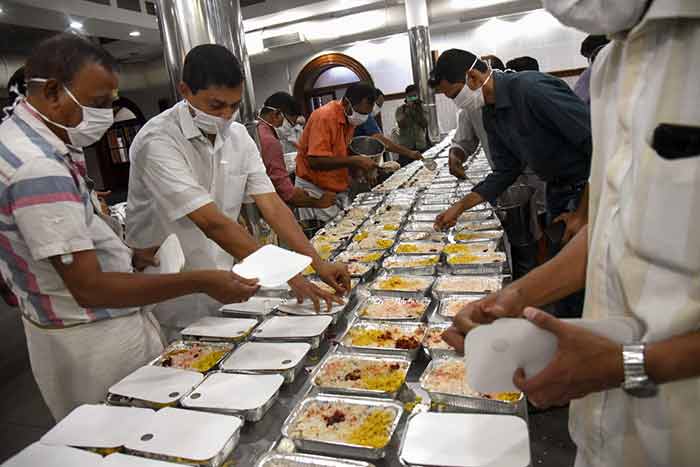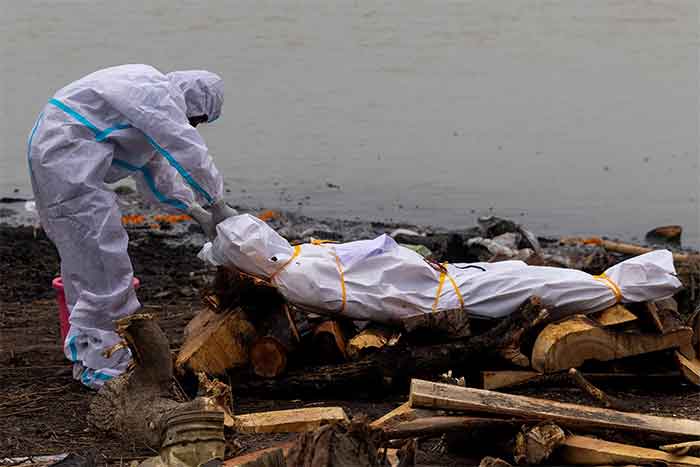
World Health Organization’s Head, Tedros Adhanom Ghebreyesus, suggested five P’s to fight the deadly Virus all over the world — Prevention, Preparedness, Public health, Political leadership, and People.
One of the first Indian states to implement these suggestions as well as key takeaways from their past experience is Kerala. The State has dealt with Nipah virus in 2018-19. It is more catastrophic than coronavirus but the transmission rate and areas affected were much lower with no ingress from abroad. People are extra cautious as major flood hits every year and summer monsoon that triggers diseases like dengue, influenza and scrub typhus.
Kerala recorded its first case in January when three medical students returned from Wuhan, China— epicenter of Coronavirus, followed by Italian tourists and other International travelers contracted with the virus already. The State implemented contact tracing of foreign travelers with a 28 day quarantine and mandatory isolation to prevent further spread of the virus. There is a complete shut-down of immigration for past two months now.
Travelers from nine worst affected countries including Iran, Italy and China had to undergo precautionary screening at Kerala’s four international airports. People with common symptoms were tested and isolated. They were quarantined right from the first week of February, two weeks before India began official screenings at airports. It was strategically implemented — providing food, temporary shelter and proper medications.
They analyzed route maps of people returning from abroad. Kerala was one of the first states to set up Covid-19 care centers in each district to accommodate the quarantined foreigners stuck into unknown territory.
According to Henk Bekedam, Indian representative of World Health Organization, Kerala’s prompt response is a result of its past experiences and investment in emergency like situations. He praised its preparedness and pointed to measures like district monitoring, risk communication and community engagement.
On the day of national lockdown total number of cases was 519 which multiplied thrice by the end of March. The current toll has reached 25,000 in India.
Preventive measures like patrolling borders — natives returning from any part of country were required to undergo a sample test to prevent community transmission. Entrants using trains, buses, local vehicles were screened with a non- contact thermometer to check body temperature.
Excellent leadership demonstration by Chief Minister Pinarayi Vijayan received immense appreciation. He ordered a complete lockdown in February, shutting colleges and schools, put a ban on large gatherings and advised to worship at home and ensured people friendly policing.
Kerala has the highest literacy rate with best-performing public health system in the country. It spends an average 5.6% of State’s budget into health and family welfare. It ranks first on — birth immunizations, life expectancy and top notch healthcare specialists. Kerala followed WHO’s recommendation of aggressive testing, conducted 15000 tests in the first week of April. Central government certainly doubted the feasibility of mass testing in India but it proved successful in the case of Kerala.
“Break the Chain” slogan resonated well with the people. They understood a way to disrupt the pattern — those infected should not come in contact with others and eventually diminishes the rate of transmission. Their collective will to fight the pandemic that included strict social distancing was very well received by the people.
It was the first State to sanction an economic package of ₹20,000 crore at a time when the rest of the country was still preparing for an anticipated lockdown followed by Prime Minister’s call for ‘Janata Curfew’. Economic relief included — free ration for everyone irrespective of social standings, delivery of free lunches to schoolchildren, grant of two month’s advance pension, extension of water and electricity bills by a month, ₹2,000 crore worth loans to be given for families in need, aid to the service providers for better network connectivity and Internet even at remotest areas. Socio economic welfare remains one of the most inspiring strategies implemented by the government.
Kerala’s Health Department set up 18 committees to work from the ground and to execute all preventive measures across the state. They held daily evening meetings and press conferences to evaluate their actions. Pinarayi Vijayan’s video conferences built mutual trust, reflected upon the gravity of the situation, educated about the severity and a need for mass participation in a campaign against COVID-19.
Daily media coverage and reports on the developments in the cases, awareness campaigns and a 24×7 mental health help line was put in service to provide counseling, set up of community kitchen, production of masks and hand sanitizers.
There is a possibility of undetected corona positive cases in India — testing rates are low as well as expensive — Bihar has only one testing center for over 104 million people. It raises question to the viability of these reports. Maharashtra records half of country’s total death tally becoming the epicenter of Coronavirus spread in India. There is a large population frequently suffering from chronic illnesses like diabetes, asthma, and cancer in many cases — more vulnerable and susceptible to Coronavirus as these comorbidities add to the soaring death tolls every day.
Kerala’s strict guidelines, timely measures and proactive approach to minimize the rate of transfer have received worldwide praise. It has successfully given a Kerala Model to be achieved by every other state in India. Out of 388 cases, 288 have successfully recovered with three unfortunate deaths till now. It is a result of coordinated efforts between healthcare sector and state administration complying with directives issued. One of the reasons for Kerala being the first affected state is its large overseas population. Nearly every household has a family member working or studying abroad. They are still vigilant about the recurring nature of Covid 19, evident from new cases in China earlier this week. The pandemic is not yet over.
K.K. Shailja, State’s health minister said, “We hoped for the best but planned for the worst. Now, the curve has flattened, but we cannot predict what will happen next week.”
Talha Mujibi, Post Graduate Student, Jamia Millia Islamia
SIGN UP FOR COUNTERCURRENTS DAILY NEWS LETTER

















































